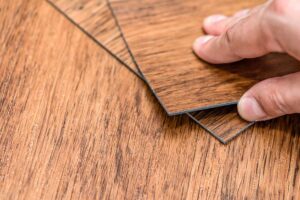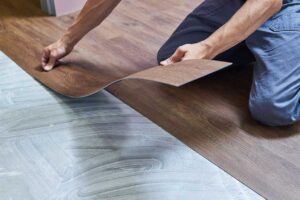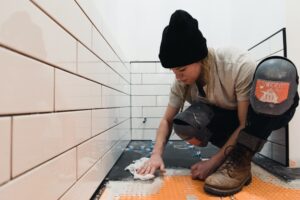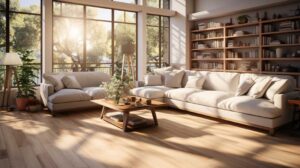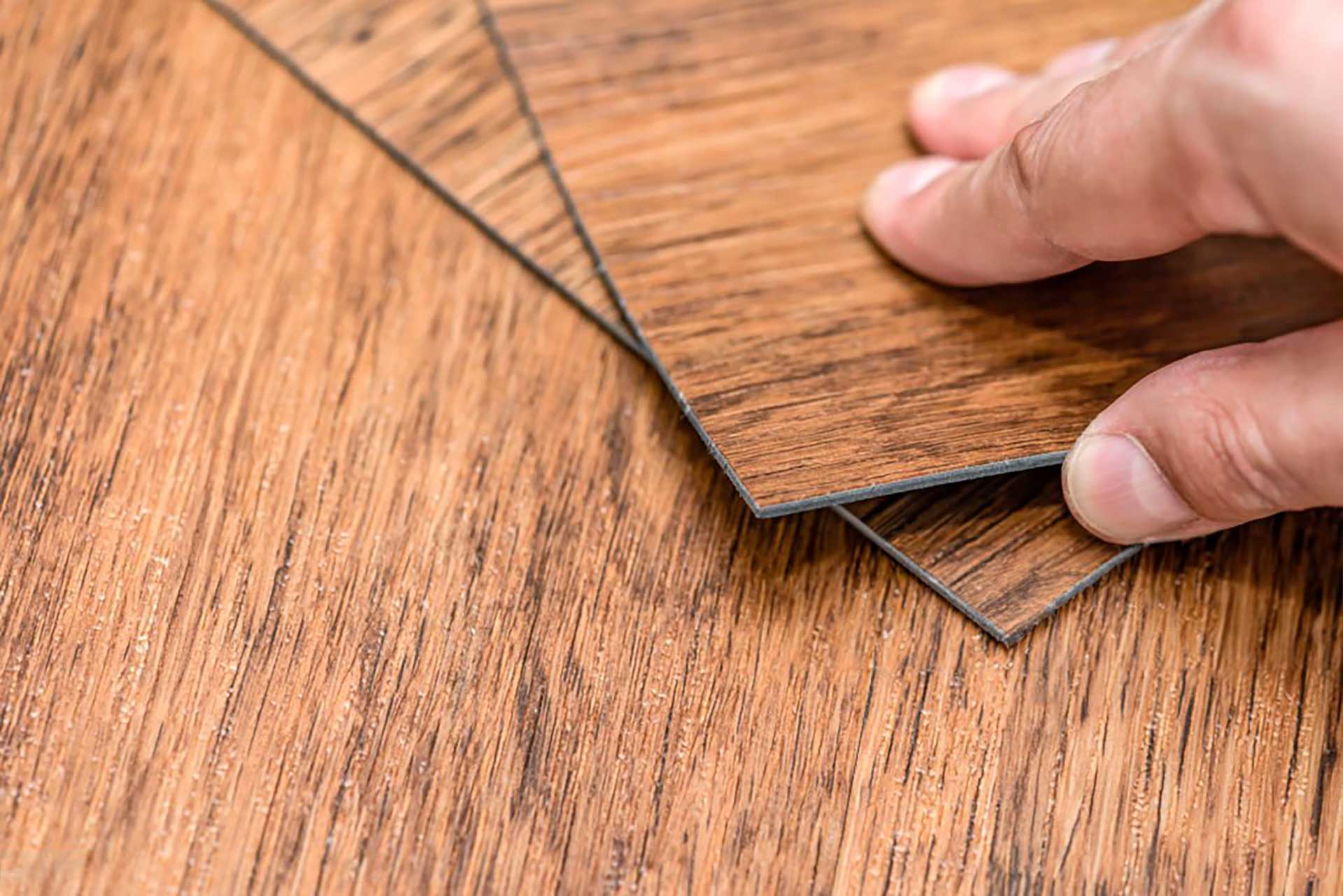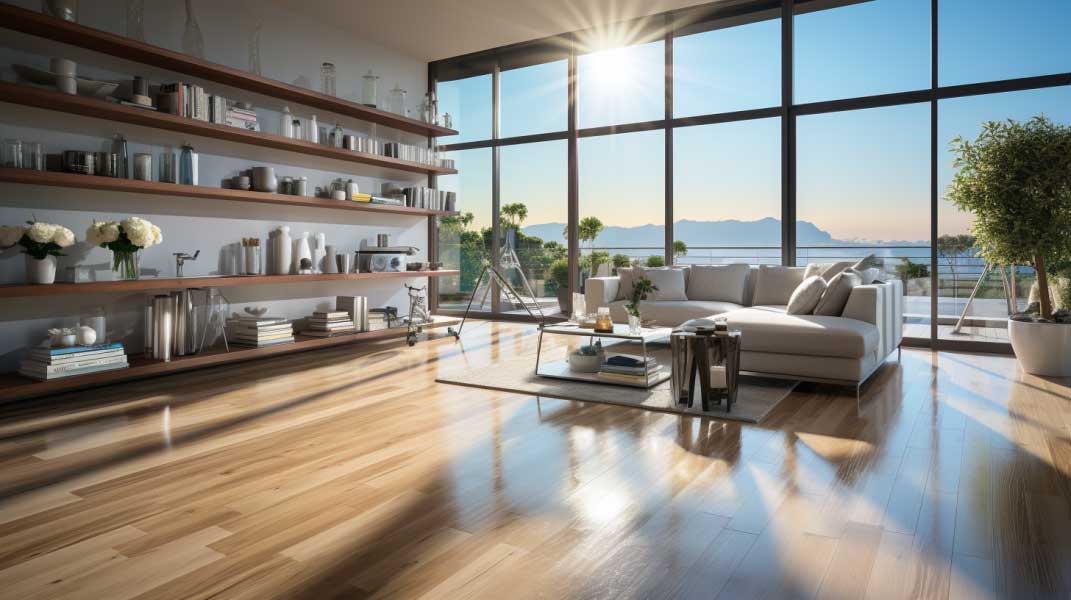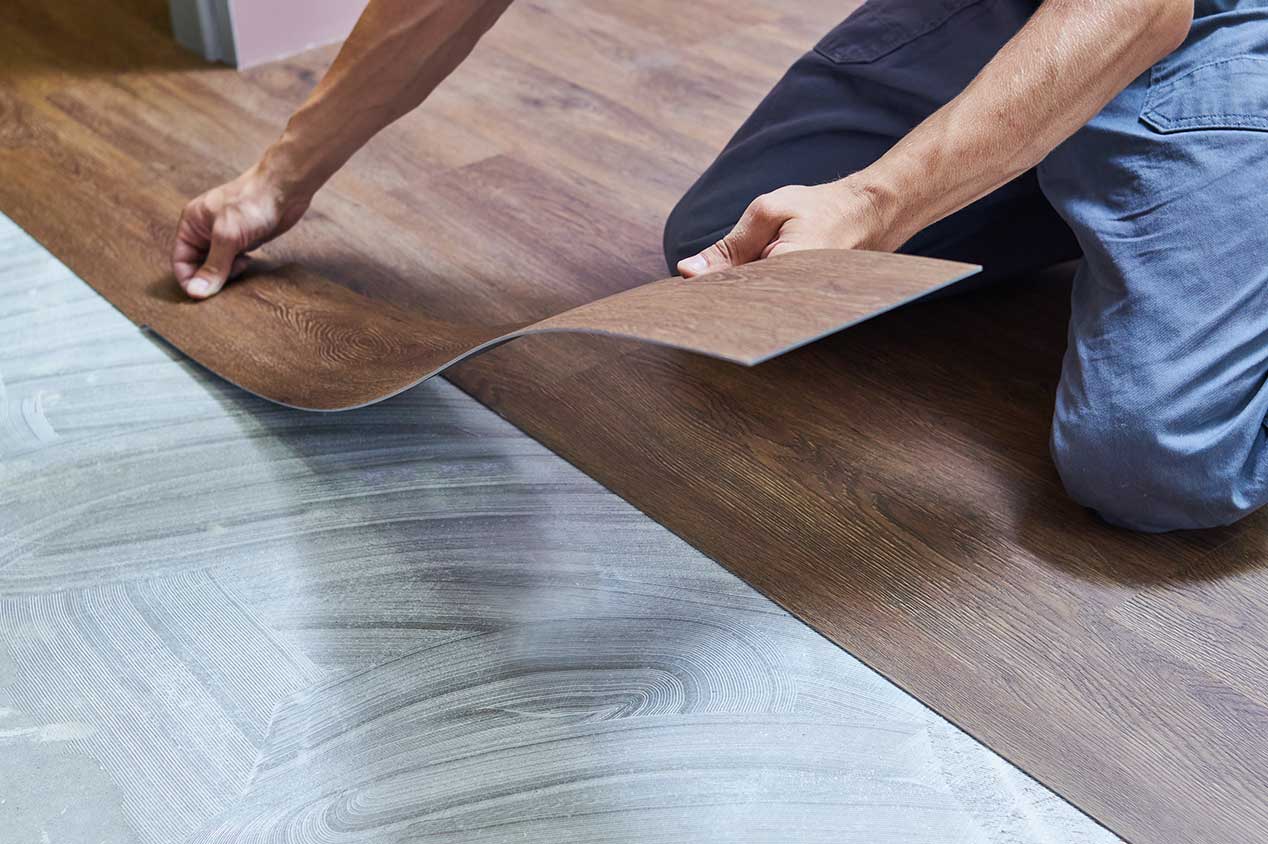You’re the guardian of your home’s treasure – that sleek, durable LVP flooring. But even buried gold tarnishes without care. To keep your floors shimmering like new, you’ve got to arm yourself with the right techniques. From battling dust bunnies to warding off water spots, we’ll guide you through the top 10 cleaning tips to ensure your LVP flooring’s luster lasts a lifetime. Dive in and discover how to maintain your flooring’s brilliance with expertise and ease.
Regular Sweeping Routine
Why’s it crucial to sweep your LVP (Luxury Vinyl Plank) flooring regularly? Dust, dirt, and debris can quickly accumulate on your floors, acting like sandpaper underfoot. Over time, this can scratch and dull the finish of your LVP, compromising its aesthetic and protective layers. To prevent such wear, implement a sweeping schedule that aligns with the foot traffic in your space. Daily sweeping is ideal for high-traffic areas, while less frequented zones might need it only a couple of times a week.
When traditional brooms aren’t handy or you’re seeking dust mop alternatives, consider microfiber pads or electrostatic cloths. These options trap particles effectively, ensuring your flooring remains unblemished and visually appealing. Remember, consistency in your sweeping routine will extend the life and beauty of your LVP flooring.
Appropriate Cleaning Solutions
When selecting cleaning solutions for your LVP flooring, it’s essential to opt for pH-neutral cleaners to ensure compatibility with the material. Harsh chemicals can strip the protective coating of LVP floors, leading to premature wear and dullness. Always read labels carefully to confirm that the product you’re using is designed for luxury vinyl plank surfaces.
Ph-Neutral Cleaners
To maintain your LVP flooring’s appearance and durability, it’s essential to use a pH-neutral cleaner designed for vinyl flooring. These specialized cleaners prevent damage to the floor’s finish, ensuring it stays looking fresh and clean without the residue that harsher chemicals can leave behind. Remember, the cleaning frequency and the tools you use, such as microfiber mops, are just as crucial as the solution itself.
Here are five pivotal points:
- Select a pH-neutral cleaner: Specially formulated for LVP to avoid deterioration.
- Avoid abrasive tools: Use microfiber mops that are gentle on the surface.
- Follow manufacturer recommendations: For the correct cleaning solution.
- Dilute properly: To ensure no harm to the flooring.
- Test in an inconspicuous area: To safeguard against potential discoloration.
Avoid Harsh Chemicals
Steer clear of harsh chemicals like bleach and ammonia, as they can strip away your LVP flooring’s protective coating and lead to damage. These potent substances are notorious for causing chemical abrasion, which can dull the surface and compromise the integrity of your flooring. Additionally, the discoloration risks associated with these aggressive cleaners are significant. They can alter the vibrant, natural appearance of your LVP by creating unsightly stains or fading the color.
To maintain the beauty and longevity of your floors, opt for pH-neutral solutions specifically formulated for LVP. These gentle yet effective products will clean without inflicting harm. Remember, your LVP’s endurance is directly linked to the care you give it, so choose your cleaning agents wisely.
Mopping Techniques for LVP
Begin your mopping routine by selecting a microfiber mop and a gentle, pH-neutral cleaner to protect your LVP flooring’s integrity. Mop selection is crucial, and a microfiber mop is ideal for its softness and effectiveness. Water temperature should be warm but not too hot, as extreme temperatures can damage the flooring.
- Mop Selection: Opt for a microfiber mop to prevent scratches.
- Water Temperature: Use warm water to enhance cleaning power without risking damage.
- Cleaning Solution: Choose a pH-neutral cleaner specifically designed for LVP floors.
- Mopping Motion: Glide the mop in a figure-eight pattern for maximum coverage and efficiency.
- Rinse Regularly: Keep the mop fresh by frequently rinsing away dirt to avoid leaving streaks.
Preventative Measures for Dirt
To ensure the longevity of your LVP flooring, it’s essential to stop dirt at its source. Incorporate entryway dirt traps and regular dry sweeping into your cleaning regimen to significantly reduce the amount of debris that comes into contact with your floors. Additionally, strategically placed protective floor mats can act as a first line of defense, absorbing excess moisture and capturing fine particles.
Entryway Dirt Traps
While you’re keeping your LVP flooring pristine, consider placing high-quality doormats at each entryway to trap dirt before it spreads. A welcome mat isn’t just a friendly greeting; it’s a first line of defense. To further prevent dirt from marring your floors, implement these strategies:
- Position shoe racks near entrances to encourage guests and household members to remove footwear.
- Choose doormats with textured surfaces to effectively scrape off debris.
- Ensure doormats are absorbent to tackle moisture, especially in rainy or snowy seasons.
- Regularly shake out or vacuum doormats to maintain their dirt-trapping efficiency.
- Select doormats that extend the full width of the doorway for maximum coverage.
Adopting these measures will significantly reduce the amount of dirt that reaches your LVP flooring.
Regular Dry Sweeping
After setting up your entryway defenses, you’ll want to regularly dry sweep your LVP floors to catch any dirt that still manages to get inside. A microfiber choice for your mop or cloth is ideal, as it attracts and holds onto particles, reducing the likelihood of them scratching or embedding into your flooring. Practice sweeping in one direction—start from the farthest corner of the room and work your way towards the exit. This sweeping direction ensures that you’re not just pushing the dirt around, but rather collecting it progressively. Consistent, gentle strokes will suffice; there’s no need for vigorous scrubbing. Keeping this routine will maintain the pristine condition of your LVP flooring, safeguarding its luster and longevity.
Protective Floor Mats
Even though you’re regularly sweeping, placing protective floor mats at entrances can significantly reduce the amount of dirt that reaches your LVP floors. Strategic mat placement is critical in safeguarding your flooring against debris and moisture, ensuring the longevity of your investment. Here’s how to optimize the use of floor mats:
- Select mats with non-abrasive backings to avoid scratches, ensuring material safety for your LVP surface.
- Position mats both outside and inside exterior doors to capture more dirt.
- Regularly clean the mats to prevent dirt buildup that can be tracked inside.
- Choose mats that are absorbent to tackle moisture, especially in rainy or snowy climates.
- Verify that the mat materials are colorfast to prevent dye transfer onto the LVP flooring.
Spot Cleaning Spills Immediately
To protect your LVP flooring, it’s crucial to clean up spills the moment they occur. Being vigilant about immediate blotting is not just about aesthetics; it’s about avoiding potential damage from the spill composition. Whether it’s a dropped glass of red wine or a splash of cooking oil, the chemistry of these substances can react with your floor’s finish if left unattended.
Prompt action is key. Start by gently blotting—not rubbing—the spill with a clean, absorbent cloth to remove as much liquid as possible. If the spill is particularly stubborn or if it has a color that might stain, use a manufacturer-recommended cleaner. Apply it to the cloth first, rather than directly onto the floor, to prevent over-saturation and ensure targeted cleaning.
Protective Pads for Furniture
To safeguard your LVP flooring from unsightly scratches, it’s essential to attach protective pads to the legs of your furniture. These pads not only minimize damage during everyday use but also facilitate smoother movement when you need to rearrange your space. It’s a simple yet crucial step to ensure the longevity of your flooring investment.
Prevent Scratches
You’ll significantly reduce the risk of scratching your LVP flooring by affixing felt pads to the legs of all your furniture. It’s a simple yet effective step that can prolong the immaculate condition of your flooring. In addition to using protective pads, consider these practical measures:
- Regularly inspect and replace worn pads to maintain effective protection.
- Choose the right size of pads to fully cover the furniture legs.
- Ensure that the pads adhere securely to avoid slipping or detachment.
- Opt for heavier-duty felt for furniture that’s moved frequently.
- Position rugs strategically in high-traffic areas to minimize direct contact with the flooring.
Furniture Movement Ease
Using the right quantity of protective pads not only prevents scratches but also makes it easier to move furniture across your LVP flooring without causing damage. Felt pads are essential for maintaining the integrity of your floor. They should be attached to the legs of chairs, tables, and sofas, ensuring a soft barrier between the furniture and the LVP surface. When selecting felt pads, opt for high-quality ones that can withstand the weight of your furniture and regular movement.
For heavier items, consider using specialized sliding tools designed for LVP flooring. These tools help distribute the weight evenly, reducing the risk of indentation or tears. Attach them temporarily to your furniture while rearranging your room to ensure a smooth transition without compromising the floor’s appearance or lifespan.
Managing Humidity Levels
In spite of your home’s natural climate variations, maintaining indoor humidity levels between 30-50% is crucial for LVP flooring longevity. An imbalance can lead to warping or gaps, compromising both the aesthetic and structural integrity of your flooring. Therefore, it’s essential to:
- Monitor levels regularly with a reliable humidity gauge.
- Utilize a dehumidifier in damp conditions to reduce excess moisture.
- Ensure proper ventilation, especially in high-humidity areas like kitchens and bathrooms.
- Use humidifiers during dry seasons to prevent your LVP from becoming too brittle.
- Regularly check for leaks or water intrusion, which can cause localized spikes in humidity.
Avoiding Harsh Chemicals
Why should you avoid harsh chemicals when cleaning your LVP flooring? The use of aggressive cleaners can lead to a chemical breakdown of the protective wear layer of your luxury vinyl plank (LVP) flooring. Over time, this deterioration not only dulls the appearance of your floors but can also compromise their durability and longevity. Moreover, certain chemicals might trigger allergy risks for occupants, especially those with heightened sensitivities. It’s crucial to select cleaning products that are specifically designed for LVP flooring to maintain its luster and integrity without causing harm. Gentle, pH-neutral solutions are typically recommended. By conscientiously choosing appropriate cleaners, you’ll ensure your floors remain pristine while safeguarding the indoor environment from potential allergens and harsh chemical exposure.
Periodic Deep Cleaning
To protect your LVP flooring’s sheen and strength, you should incorporate periodic deep cleaning into your maintenance routine. This process goes beyond your daily sweeping and spot cleaning, addressing the grime that builds up over time.
- Schedule deep scrubbing sessions every few months depending on foot traffic.
- Use a pH-neutral cleaner specifically designed for LVP floors to avoid damage.
- Employ soft-bristle brushes when deep scrubbing to dislodge stubborn dirt without scratching the surface.
- Consider steam cleaning as an effective, gentle method to sanitize and refresh your floors.
- Always dry the floor thoroughly after deep cleaning to prevent moisture damage.
Professional Maintenance Advice
After establishing a routine deep clean, you’ll want to consult with a flooring professional annually to keep your LVP in top condition. These experts will assess your flooring’s overall health and recommend specific maintenance strategies tailored to your LVP’s needs. Steam mopping, while beneficial for thorough sanitation, should be approached with caution and ideally performed by professionals who understand the correct heat and moisture settings to prevent damage to your LVP’s integrity.
A professional’s nuanced approach ensures that deep cleaning procedures do not compromise the adhesive bonds or the wear layer. They can also advise on the ideal pH level for cleaning solutions used on LVP to maintain its finish and prevent clouding or discoloration, ensuring the longevity and aesthetic appeal of your flooring.
Frequently Asked Questions
Can I Use a Steam Mop on LVP Flooring Without Causing Damage?
You shouldn’t use a steam mop on LVP flooring, as the intense heat and moisture can warp and damage the material. Consider cleaning alternatives that are safer for your floors, such as using a damp mop with a gentle, pH-neutral cleaner. This method effectively cleans without the steam risks. Regularly sweeping and promptly cleaning up spills will also preserve your LVP’s integrity and appearance, ensuring its longevity without the need for harsh steam cleaning.
How Do I Repair Scratches or Small Chips in My LVP Flooring to Maintain Its Appearance?
You’ve noticed the unsightly scratches and small chips marring your LVP flooring, haven’t you? Fear not, the solution lies within reach. By skillfully using a repair kit, you’ll have the power to fix those imperfections. Precision is key—meticulously apply the filler, ensuring it’s flush with the floor’s surface. Color matching is crucial; select the right shade to seamlessly blend the repair. With care and attention, you’ll restore your floor’s pristine appearance.
Is It Safe to Use a Vacuum Cleaner on LVP Floors, and if So, What Type of Vacuum Cleaner Is Best?
Yes, you can safely use a vacuum cleaner on LVP floors. Choose a vacuum that features adjustable suction settings to prevent damage. Look for models with soft-bristle vacuum attachments specifically designed for hard flooring. These attachments and lower suction settings are gentle on your floors while still effectively removing dirt and debris. Regular use of the correct vacuum cleaner will help maintain your LVP flooring’s pristine condition.
What Are the Long-Term Effects of Sun Exposure on LVP Flooring, and How Can I Protect My Floors From Fading?
Imagine your LVP flooring as your skin; prolonged sun exposure can lead to fading and deterioration, much like a sunburn. To shield your floors, consider applying sunscreen coatings, which act like SPF for your surfaces. Additionally, integrating window treatments like blinds or UV-blocking films will cast a protective shadow, preserving the vibrancy and condition of your LVP. It’s crucial to tackle this issue with a precise and informed approach to ensure lasting beauty and integrity.
Can LVP Flooring Be Safely Recycled or Repurposed at the End of Its Life Cycle?
Yes, you can recycle or repurpose your LVP flooring at the end of its life cycle. The recycling process often involves breaking down the materials for reuse in new products. For repurposing ideas, consider using old LVP for creative projects like home decor or garden pathways. It’s essential to consult with recycling centers or flooring manufacturers for proper guidelines to ensure you’re handling the material responsibly and contributing to sustainability efforts.

